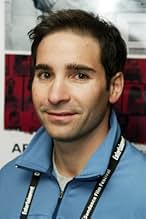This movie introduces you to a handful of men who have been freed from long prison terms after being exonerated. As shocking and heartbreaking as this movie is, it gives no hint of the scale of the problem. While it is a powerful experience to get to know these men, I found myself urgently wondering what percentage of the prisoners who get DNA tests turn out to be innocent. A little web surfing led me to this quote from William Sessions (former director of the FBI):
"In early 1988, the FBI Laboratory Division created a DNA testing lab; by year's end, testing was completed in 100 active cases. I was fully expecting the results to confirm the careful investigative and evaluative work that had gone into the decisions to prosecute these suspects. Instead, I was stunned by the results. In about 30 percent of the cases, the DNA gathered in the investigation did not match the DNA of the suspect. Fifteen years later, this rate remains virtually the same. Approximately 25 percent of DNA tests do not produce a match."
Now, it would certainly be reasonable to suppose that this rate of failure of our justice system's "careful investigative and evaluative work" is a similar 25% to 30% in the rest of the cases where it hasn't been scientifically checked by DNA testing. With two million Americans in the prison system, if 25% of them are innocent, then we have 500,000 innocent Americans in jail.
After Innocence is a very good film but I think its impact could be much greater if it gave some context to these seven individuals by talking, even briefly, about how many other wrongfully incarcerated Americans may be moldering away in prison. The only hint of this in the film is a shot of a bank of filing cabinets at the Innocence Project that contains thousands of requests for help all unopened.


























